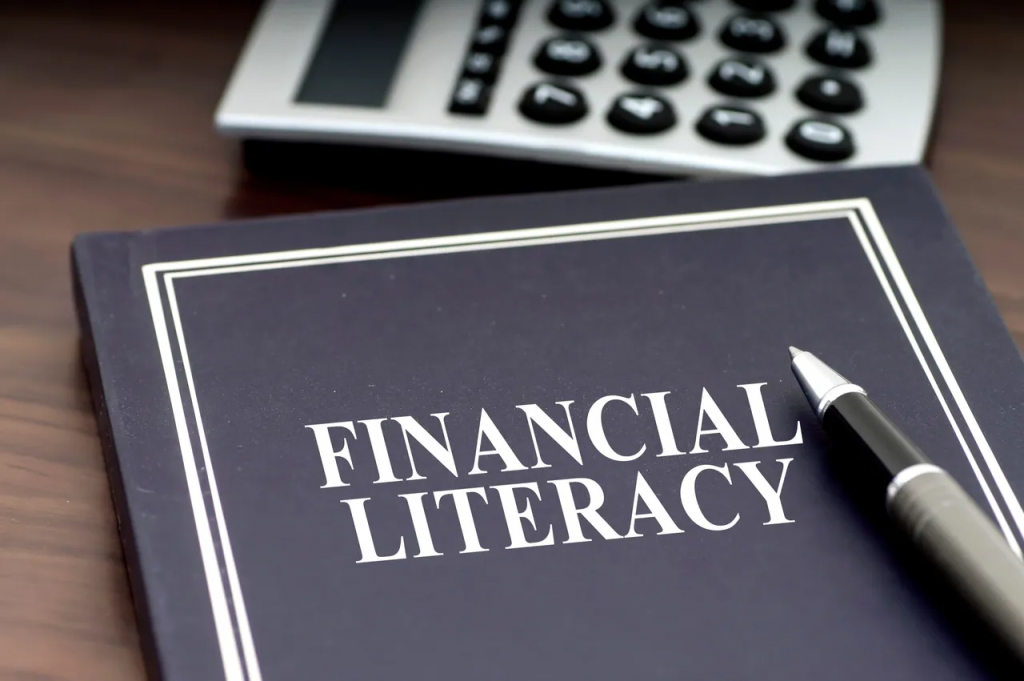What Is Financial Literacy?

Learn How To Manage Your Money With Our Financial Literacy Guide
Financially literate individuals use financial knowledge to make better financial decisions. From everyday spending to long-term financial planning, effective money management means using money to further your personal goals – no matter what they are.
Much of the material in this guide comes from our Financial Basics course, which concentrates on some of the basic knowledge young adults need to know – especially when transitioning to college. If you don’t have access to Financial Literacy 101, these topics will get you started on the path to smart spending. If you do have access, you can log in for expanded resources and to create a personalized plan.
Financial Health
The concept of financial health, including smart decision-making.
In this topic, you’ll learn:
- Trade-offs between school, work, and money.
- Traits of financially healthy students: organization, information, and focus on the future.
- Average college student debt, including credit card debt.
- Reasons why people find themselves in unplanned debt.
If you’ve ever tried to get in shape, you know that there’s no magic formula for exercising and eating right. You need the discipline to put your knowledge to work in the real world – even when it would be so easy to grab a super-sized burger and skip that trip to the gym. Becoming a financially healthy student is not so different – there are just a few things to know, but finding the motivation to make informed decisions every day can be the greatest challenge. Luckily, you can often start to see benefits of effective financial management right away – in the form of extra cash.
For working adults, the first step to financial health is earning more money than they spend. But for students, being financially healthy is a bit different. After all, the whole idea of being a student is to spend time studying and not working (or at least working less) in order to prepare for better opportunities in the future. And part of this trade-off often involves taking on debt in order to pay for school.
Financial Healthy Students
A financially healthy student works to minimize educational debt while successfully pursuing their career goals in college. They get the best deals on their loans, make informed decisions about whether or not to work while in school, and understand the tradeoffs between spending now and repaying later.
How does one become a financially healthy student? Financially healthy students share most of the following traits:
- They are organized. Most of us think we are pretty good at keeping track of our money, even without creating a spending plan. The only problem is that we are… often wrong. If you’ve ever been surprised by your checking account balance or credit card bill, you know what we mean.

To avoid wasteful spending, financially healthy students track their income, monthly bills, and daily expenses. In a few minutes we will learn about creating monthly budgets, using the internet to keep your finances organized, and making sure you don’t miss payments by accident. Being organized doesn’t take much time, and it will help to ensure that you are spending money on what matters the most to you.
- Next, financially healthy students are informed. They understand any fees associated with their bank or credit union accounts, and they know how much these fees add up to each month. They check their credit report at least once per year to spot errors and to check for the warning signs of identity theft. They also know the interest rates on all of their debt, and understand what could possibly cause those rates to change. By being informed, financially healthy students can create a plan for minimizing the most expensive debt while in school – possibly saving thousands of dollars over the life of their loans.
- Finally, financially healthy students think about the future. They may not have all the answers, but they have a good idea about where they would like to be – financially – after graduation. They have thought about their career and what their financial situation may be like as far as five years into their career. These are the big questions that too few students consider when making decisions about college, careers, and debt levels. If you haven’t thought about your long term goals, a journaling exercise is coming up next. And the Real World calculator later in the course will give you a snapshot of some possible after-graduation income scenarios based on your major.
Debt And The Pressure To Spend
We mentioned before that getting in good financial shape could be a challenge. In fact, Americans are in more debt today than at any other time in history, and college students are no exception. In addition to a student loan debt of over $30,000, the average student graduates with credit card debt of around $4,000. And up to 1 in 3 students graduate with $10,000 or more in credit card debt. These debt levels are many times higher than those of any previous generation and place many students in a financially vulnerable situation during and after college. Financial problems are also one of the main reasons students drop out of school – a truly worst-case scenario.
High levels of debt can happen for a variety of reasons, from unexpected medical bills to the loss of a job to paying college tuition. But the main problem many students have in managing their debt levels is controlling their everyday spending, which can add up in ways you may not expect. In fact, marketers spend billions of dollars per year to convince us to part with our money through advertising, catalogue mailings, and even by carefully orchestrating the lighting and music in your favourite stores to make you more likely to spend.

How many billboards have you seen that say, “You look great in what you are already wearing” or “Is it really worth $25 to sit in a movie theatre for 90 minutes?” No company has anything to gain from you not consuming products and services, so you are not exactly going to find a lot of positive reinforcement out there for saving money.
Many students also feel peer pressure to keep up with the spending habits of their friends. For a student completely supported by their parents, living large with a daily latte at Starbucks has no financial consequences whatsoever. For everyone else, that habit could result in an extra $5,110 of debt over four years – that’s a significant portion of the average undergraduate student loan debt.
When observing the spending habits of others, remember that the benefits of buying are public, but the downsides are private.
It’s easy to capture the fun of a new purchase or an expensive night out with a picture on Facebook. But no one posts a selfie when they’re shocked by their credit card bill or learn that they have a poor credit score. Especially when it comes to money, someone’s financial appearance can be very different than the whole picture.


